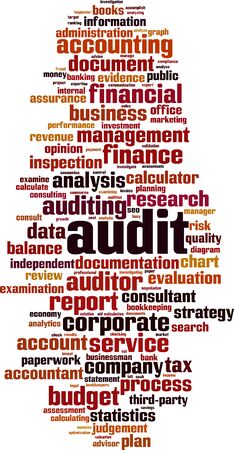1. Introduction to Auto-enrolment Pension Statements
If you’re working in the UK, chances are you’ve come across an auto-enrolment pension statement, either tucked into your payslip or sent to you by post or email. But what exactly is it? Simply put, an auto-enrolment pension statement is a document provided by your workplace pension scheme that outlines key details about your pension savings. The purpose of this statement is to help you keep track of how much money has been contributed into your pension pot, both by you and your employer, as well as any investment growth or charges applied over the past year. Receiving this statement is not just a legal requirement for employers; it’s also an important tool for employees to stay informed about their retirement savings and make smarter financial decisions for the future. For most UK workers, understanding this annual snapshot is essential for staying on top of your long-term financial health, especially as the government continues to encourage everyone to save more towards their retirement through workplace pensions.
2. Breaking Down the Statement: Key Sections Explained
When you receive your auto-enrolment pension statement, it can look a bit overwhelming at first glance. However, understanding each section is crucial for keeping on top of your retirement savings and making sure your money is working hard for you. Here’s a practical guide to help you navigate the main parts of a typical UK pension statement.
Personal Details
This section usually appears right at the top of your statement. It includes your name, National Insurance number, plan reference number, and sometimes your date of birth or employer’s name. Double-check these details to ensure your contributions are being allocated to the correct account—mistakes here could delay your access to your pension pot later on.
Contributions
Your statement will break down how much you—and your employer—have paid into your pension over the last year, as well as any tax relief added by the government. This is an important part to review because every little helps! If youre keen on tracking where each penny goes (a classic British money-saving habit), check this section carefully.
| Source | Amount Contributed (£) |
|---|---|
| Your Contributions | £XXX |
| Employer Contributions | £XXX |
| Tax Relief | £XXX |
| Total Added This Year | £XXX |
Pension Pot Value
This figure shows the total amount currently in your pension pot, including all contributions, investment growth (or losses), and any charges deducted. Keeping an eye on this helps you see whether youre on track with your retirement goals. If youve moved jobs or have several pots, it’s a good idea to compare statements from different providers to get a full picture.
Projections for the Future
Your provider will estimate how much your pot might be worth at retirement age if you continue contributing at the current rate. These projections are based on assumptions about investment growth and future payments—it’s not guaranteed, but it gives you a ballpark figure to help with planning.
| Scenario | Estimated Pot at Retirement (£) | Estimated Yearly Income (£) |
|---|---|---|
| If you keep contributing as now | £XX,XXX | £X,XXX/year |
| If contributions increase by 1% | £XX,XXX+ | £X,XXX+/year |
| If contributions stop today | £X,XXX | £XXX/year |
A Quick Tip from Daily Money-Savers:
If you’re looking for ways to boost your pension without feeling the pinch, consider increasing contributions when you get a pay rise or using workplace salary sacrifice schemes—they’re tax-efficient and can give your future self a nice little bonus!

3. What Do the Numbers Really Mean?
If you’ve just received your auto-enrolment pension statement, you might be staring at a list of numbers and wondering what they actually mean for your future. Let’s break down the essentials so you can make sense of your pension balance, the contributions made by both you and your employer, and any fees or charges involved.
Understanding Your Pension Balance
Your pension balance is essentially the total amount that’s been saved up in your pot so far. This figure includes all the money contributed over time—by you, your employer, and the government through tax relief—plus any investment growth (or losses). It’s important to remember this isn’t necessarily the amount you’ll receive at retirement; it can go up or down depending on how your investments perform.
Employer and Employee Contributions
In most UK workplaces, both you and your employer pay into your pension automatically each month. For example, if you’re earning an average UK salary of £30,000 per year, the minimum total contribution under auto-enrolment rules is currently 8% of qualifying earnings. Usually, this breaks down to 5% from your own pay (with some help from tax relief) and 3% from your employer. On a salary like £30,000, that could mean around £1,800 from you and £1,080 from your employer per year—plus a top-up from HMRC.
Don’t Forget Fees and Charges
No one likes hidden costs! Pension providers typically charge management fees to cover administration and investment handling. These are often shown as a percentage—say, 0.5% to 1% per year—and are taken directly from your pension pot. While these might seem small, over time they can have a big impact on your final balance. Make sure to check your statement for any charges and understand how they affect your savings in the long run.
A Real-Life Example
Let’s say Emma earns £28,000 a year. Over one year:
- Emma contributes about £1,400 (5%) from her salary
- Her employer adds around £840 (3%)
- She receives tax relief of about £350 from HMRC
- Total annual contribution: £2,590
- Pension provider charges a 0.75% annual management fee—about £19 on her current pot
Over several years, these contributions add up—but so do the fees and investment changes. By keeping an eye on these details in your statement each year, you’ll know exactly where your hard-earned cash is going and how much is working towards building a more comfortable retirement.
4. Understanding Your Projected Retirement Income
Your auto-enrolment pension statement includes a section projecting how much you might have in your pension pot by the time you reach retirement age. This figure can look impressive or worrying, depending on your circumstances, but it’s crucial to understand what it really means for your day-to-day life after you stop working.
What Is the Projected Pension Pot?
The projected pension pot is an estimate of how much money will be in your pension fund when you reach your selected retirement age, based on assumptions like ongoing contributions, investment growth, and charges. Remember, these are only estimates and actual results may vary, especially if you change jobs, increase contributions, or there are significant changes in the market.
Annuity vs Drawdown: Your Main Options
When it comes to taking money from your pension, you’ll usually have two main choices:
| Option | How It Works | Pros | Cons |
|---|---|---|---|
| Annuity | You exchange your pension pot for a guaranteed income for life. | – Provides financial certainty – Simple to manage |
– Rates can be low – Less flexibility – Usually irreversible decision |
| Drawdown | You leave your pot invested and take income as needed. | – Flexible withdrawals – Potential for further growth |
– Income not guaranteed – Risk of running out of funds if overspent or if investments perform poorly |
What Do These Figures Mean in Real Life?
Your statement may show an estimated monthly income at retirement. For example, if your projected pension pot is £100,000 and you choose an annuity, you might receive around £400 per month (depending on rates at the time). With drawdown, the amount is less certain and depends on how much you withdraw each year and how your investments perform.
Comparing Your Projected Pension to Everyday Costs
It helps to compare your estimated retirement income with typical living expenses. Here’s a simple breakdown:
| Monthly Expense | Estimated Cost (£) |
|---|---|
| Rent/Council Tax/Utilities | £700–£1,000+ |
| Food & Groceries | £200–£300 |
| Transport/Public Transport Passes | £70–£150 |
| Leisure & Miscellaneous | £100–£200+ |
| Total Estimated Monthly Outgoings: | £1,070–£1,650+ |
Topping Up Your Pension Pot
If your projected income looks short of covering these costs, consider increasing your monthly contributions now or making use of employer matching schemes. Even small increases can make a big difference over time thanks to compound interest and tax relief.
5. Taking Action: What You Can Do Today
Check Your Contributions Regularly
Keeping an eye on your pension contributions is one of the smartest habits you can build. Log in to your provider’s online portal or review your latest statement to confirm that your own and your employer’s payments are being made correctly. Mistakes can happen—so it’s worth taking a few minutes every few months to double-check. If something doesn’t look right, contact your HR department or pension provider promptly.
Boost Your Pension Pot (Even on a Budget)
You don’t need deep pockets to give your pension a lift. Even small, regular increases in your contributions can make a big difference over time thanks to compound interest. If you get a pay rise or bonus, consider upping your percentage just a little. Another savvy trick is to put some of any extra cash—like birthday money or cashback rewards—straight into your pension. Remember, even though the cost of living is high, future-you will thank you for every pound you can spare.
Make the Most of Employer Contributions
Check if your employer offers matching contributions above the minimum required by law. Some companies will match extra payments up to a certain limit, so try to take full advantage of this “free money” if you can afford it—it’s basically a pay rise for your retirement.
Avoid Common Pitfalls
Don’t be tempted to opt out of auto-enrolment unless absolutely necessary; you’d be missing out on valuable employer and government contributions. Also, keep an eye on fees—high charges can eat away at your savings over time, so check what you’re paying and shop around if needed.
Get Support If You Need It
If things feel overwhelming, don’t struggle alone. Free resources like MoneyHelper or Citizens Advice offer straightforward guidance tailored for UK workers facing today’s financial challenges. Taking action now—even small steps—can help secure a more comfortable retirement, no matter what life throws at you.
6. Where to Get Help and Stay Informed
Understanding your auto-enrolment pension statement is crucial, but you don’t have to figure it all out alone. There are several trusted UK resources that can provide guidance, answer your questions, and help you make smart decisions for your future.
Trusted UK Resources
- Gov.uk: The official government website offers detailed information about workplace pensions, including auto-enrolment rules, contributions, and what to do if you change jobs or want to opt out. Visit the Workplace Pensions section for up-to-date advice.
- MoneyHelper: Backed by the government, MoneyHelper brings together advice from Pension Wise, the Pensions Advisory Service, and the Money Advice Service. Their free tools and guides explain how pensions work and offer practical tips for planning ahead. Explore their resources at moneyhelper.org.uk.
- Citizens Advice: If you need personalised support, Citizens Advice can help with pension queries—whether you’re unsure about your statement or need guidance on next steps. Find local help through citizensadvice.org.uk.
Tips for Staying on Track with Your Retirement Plan
- Check Your Statement Annually: Make a habit of reviewing your pension statement each year. Look out for changes in contributions or projected retirement income.
- Update Personal Details: Ensure your contact information and nominated beneficiaries are always current with your pension provider.
- Set Reminders: Use your phone or a calendar to remind yourself to check statements or review your retirement plan at least once a year.
- Stay Informed: Sign up for updates from trusted sources like MoneyHelper or Gov.uk so you’re aware of any changes in pension regulations that could affect you.
Don’t Be Afraid to Ask Questions
Pensions can seem complicated, but getting help early ensures you’re making the most of your hard-earned money. Whether it’s through official websites or speaking directly with an adviser, support is available to keep you confident and informed about your financial future.


